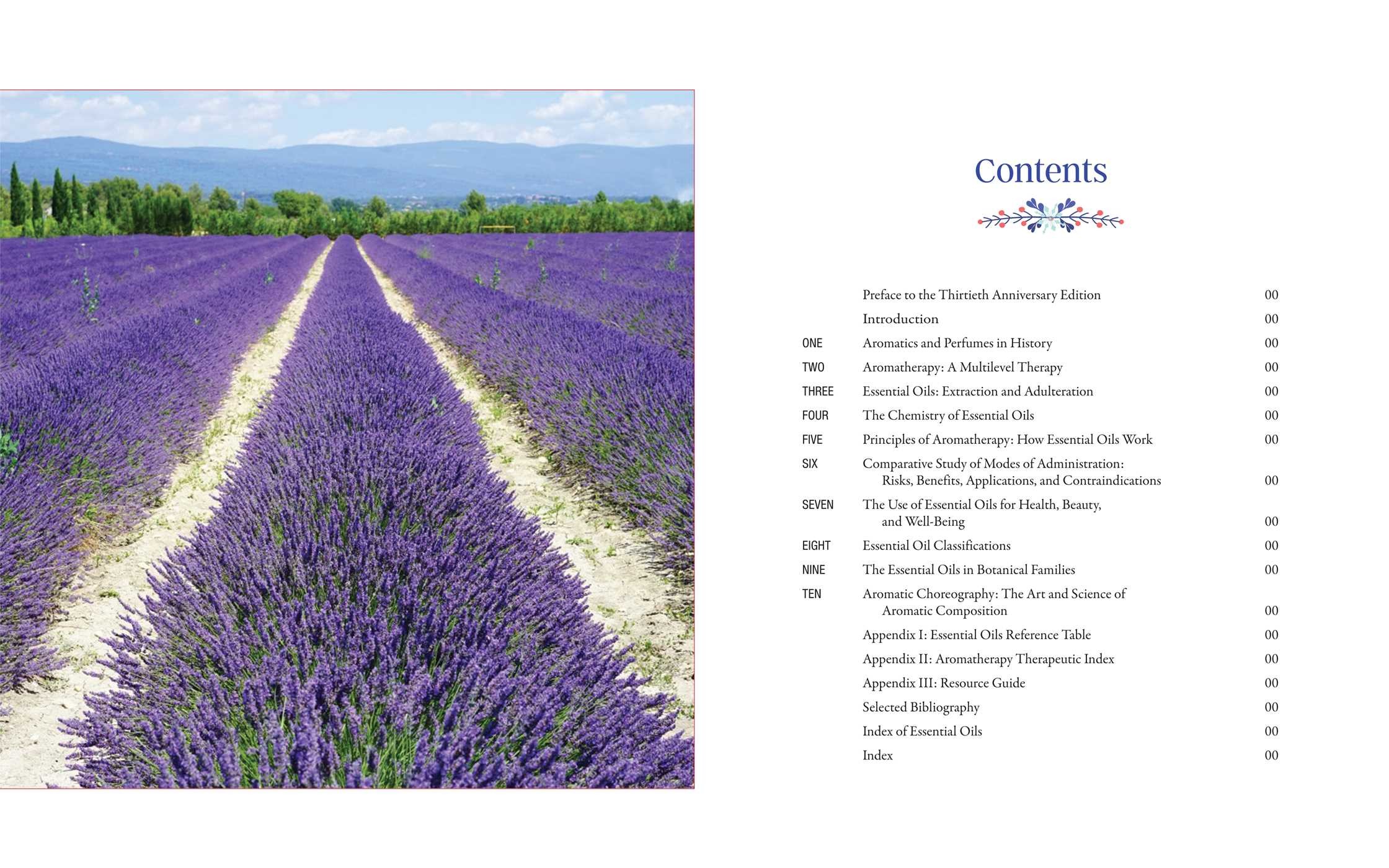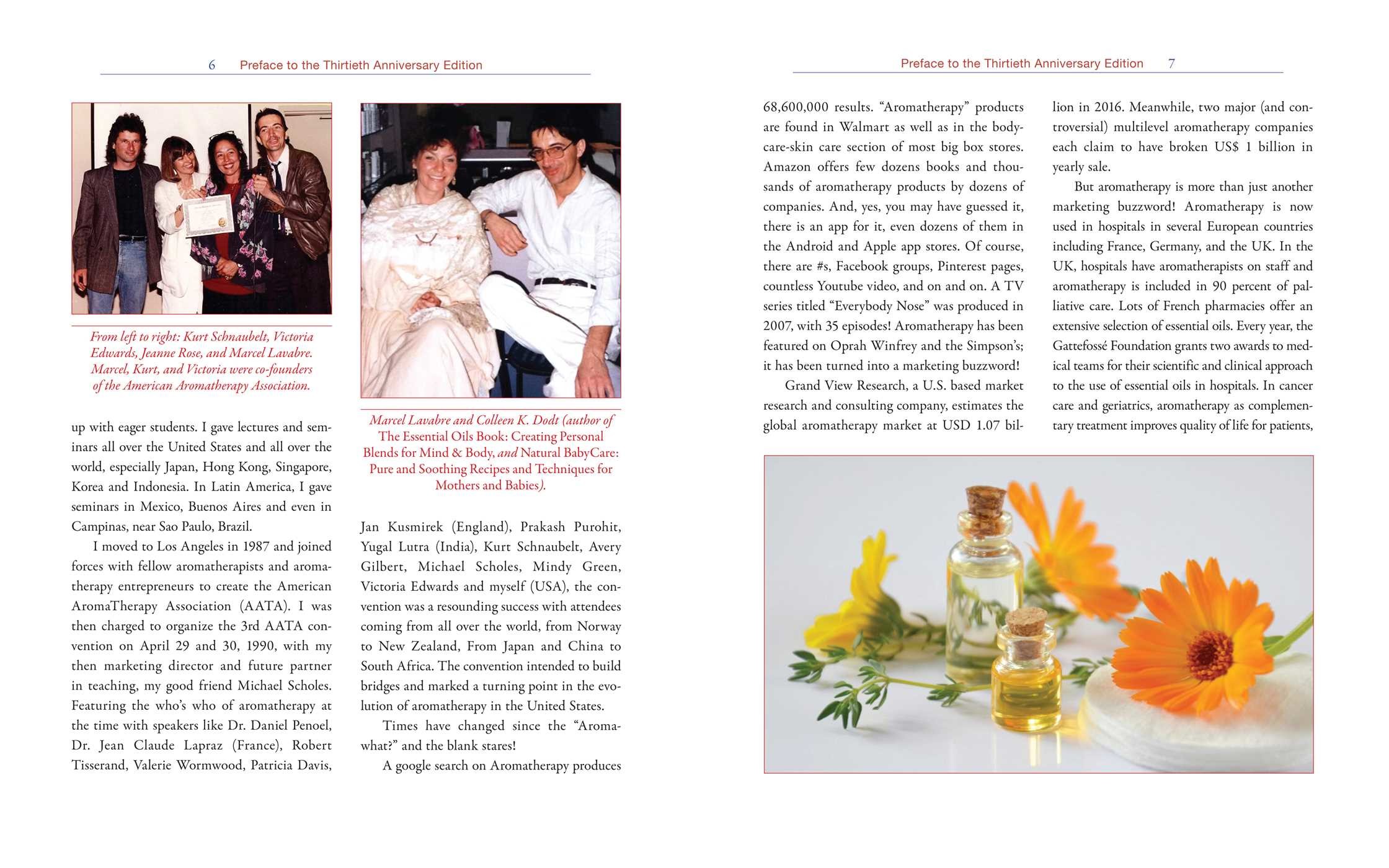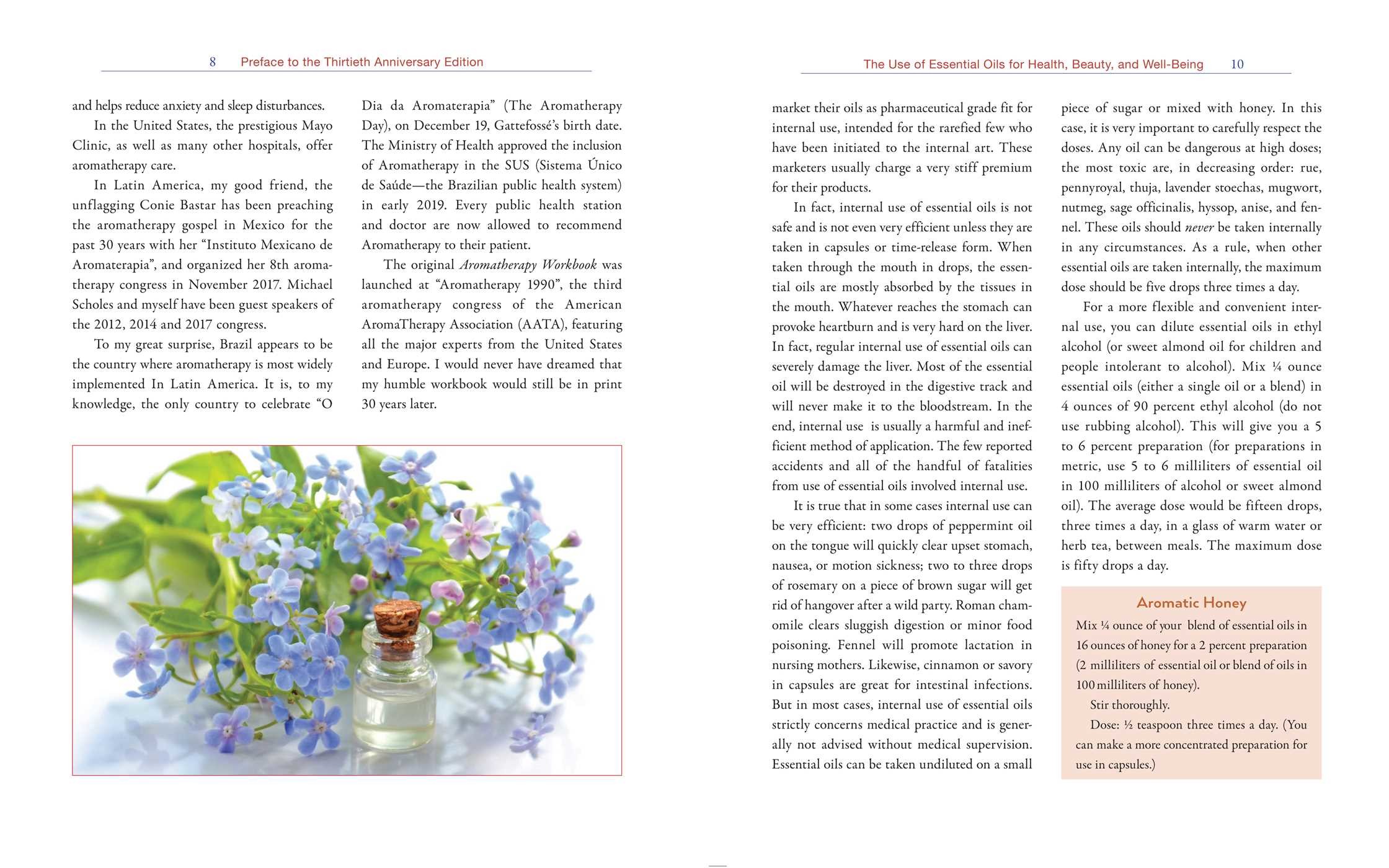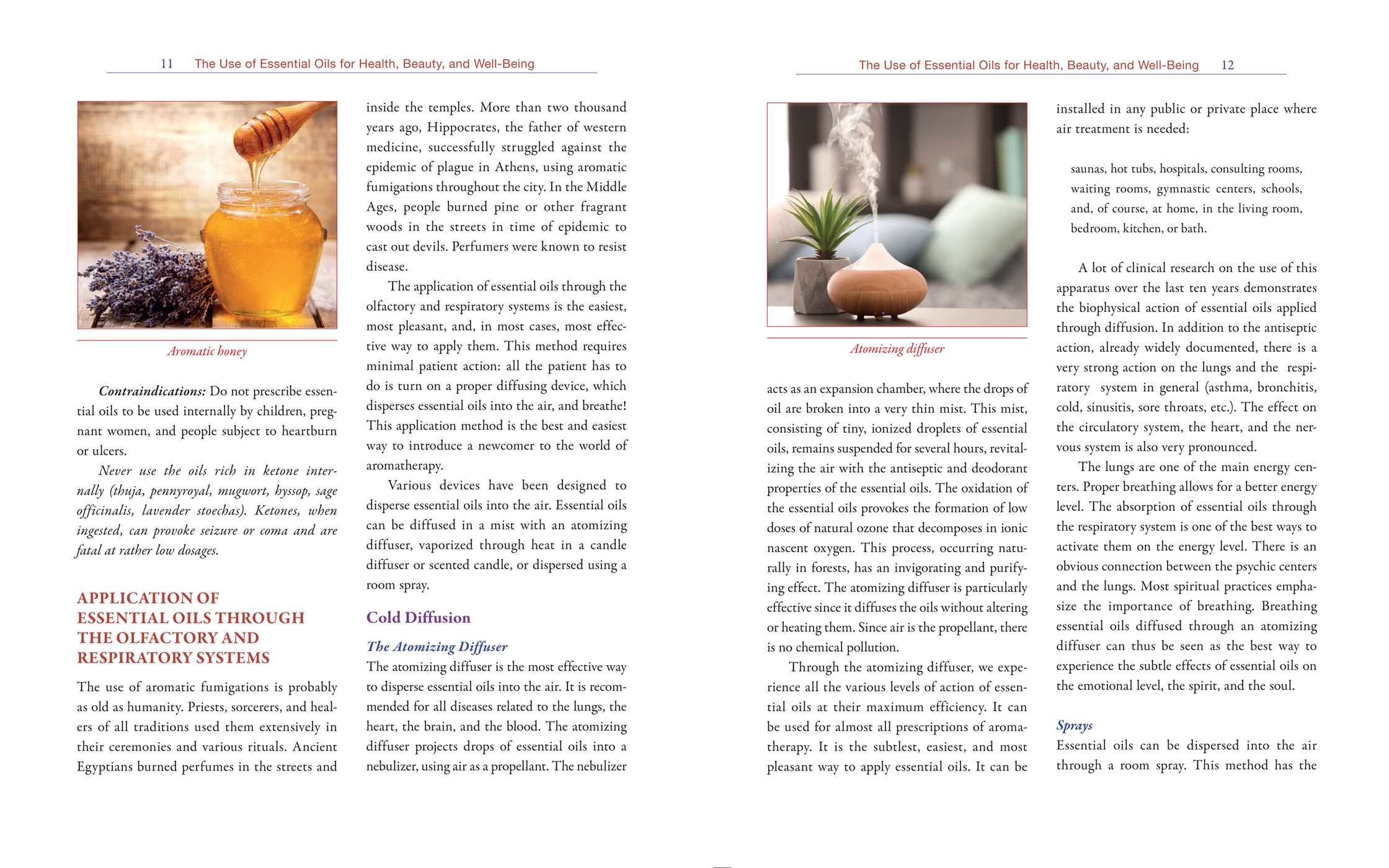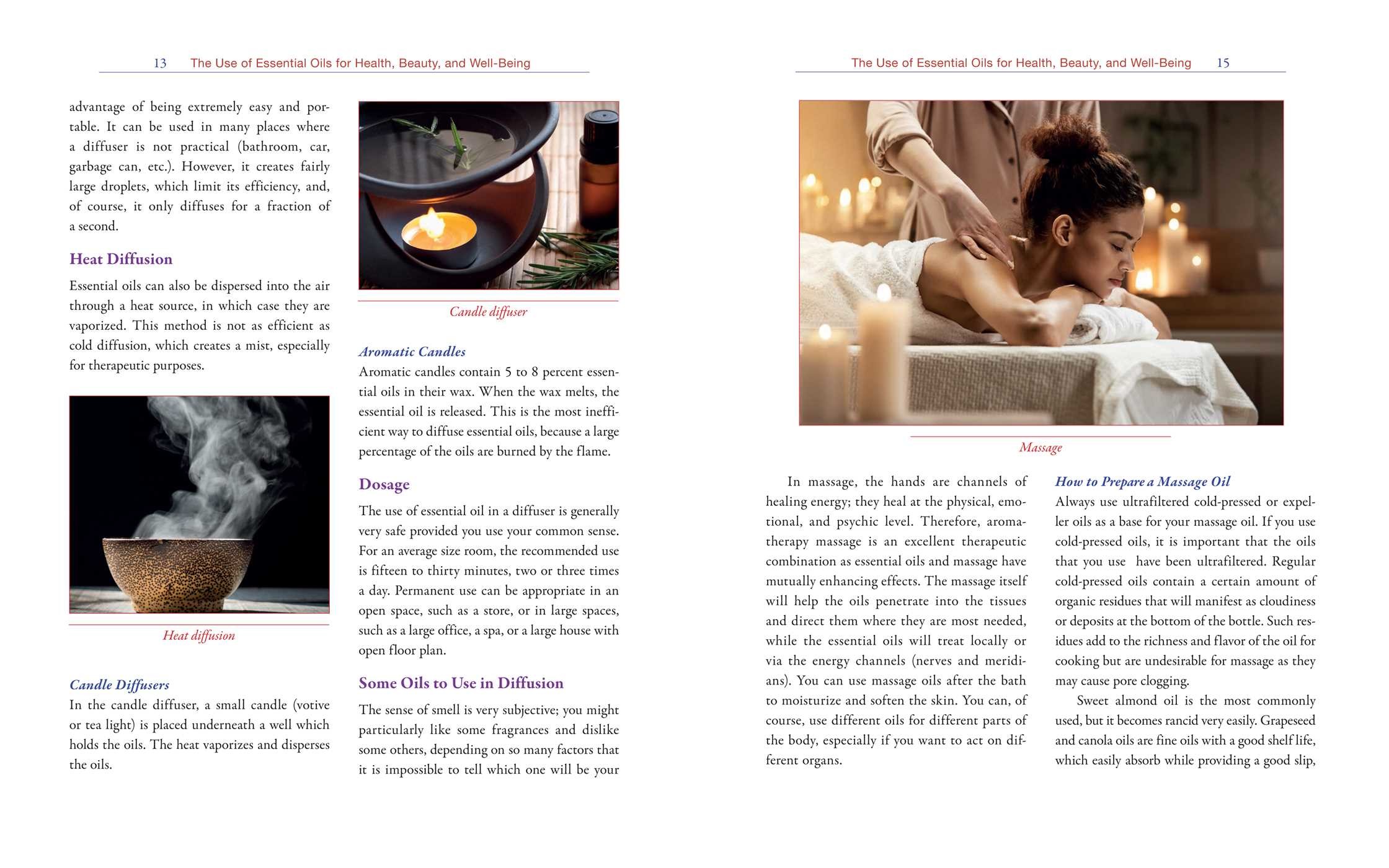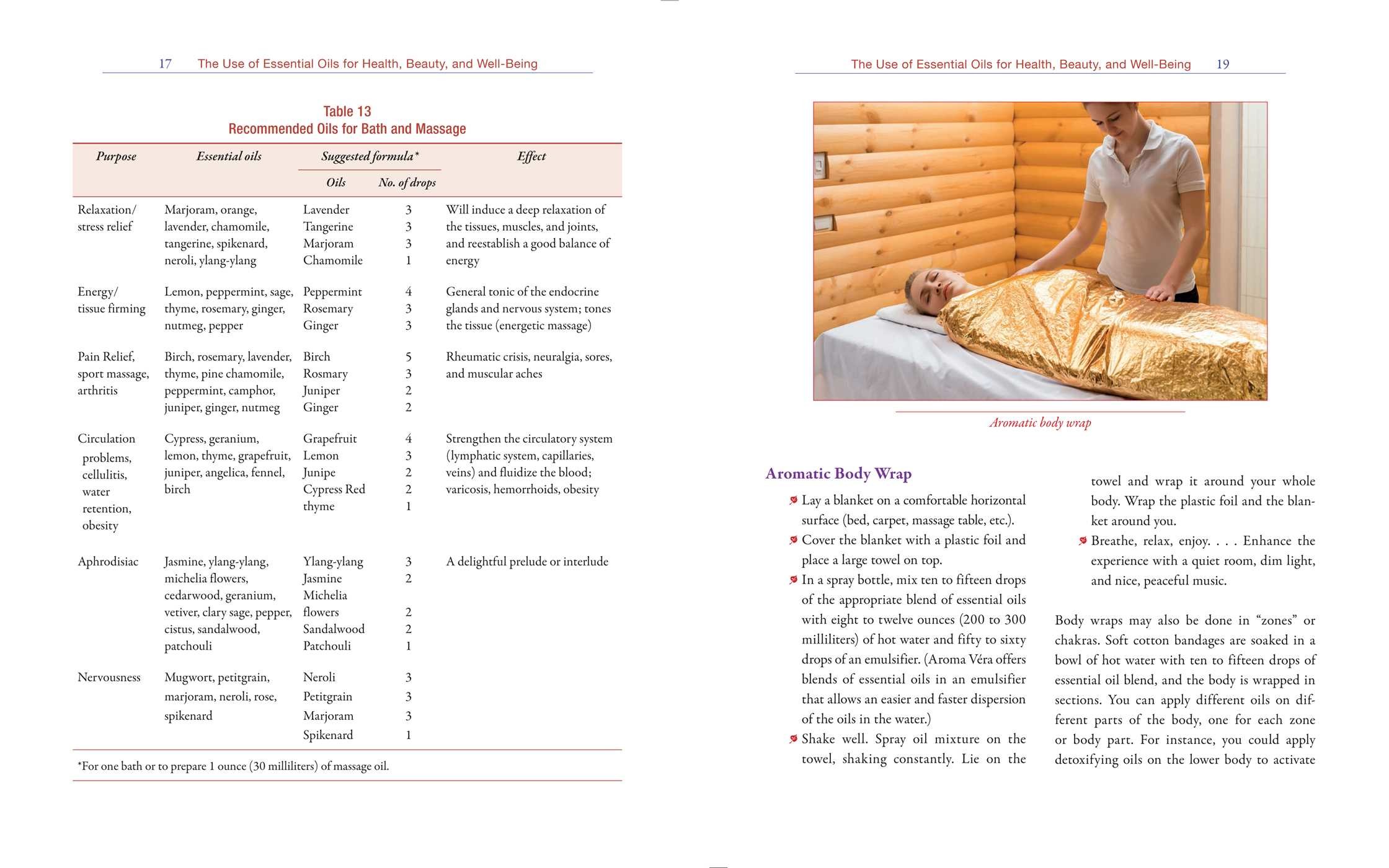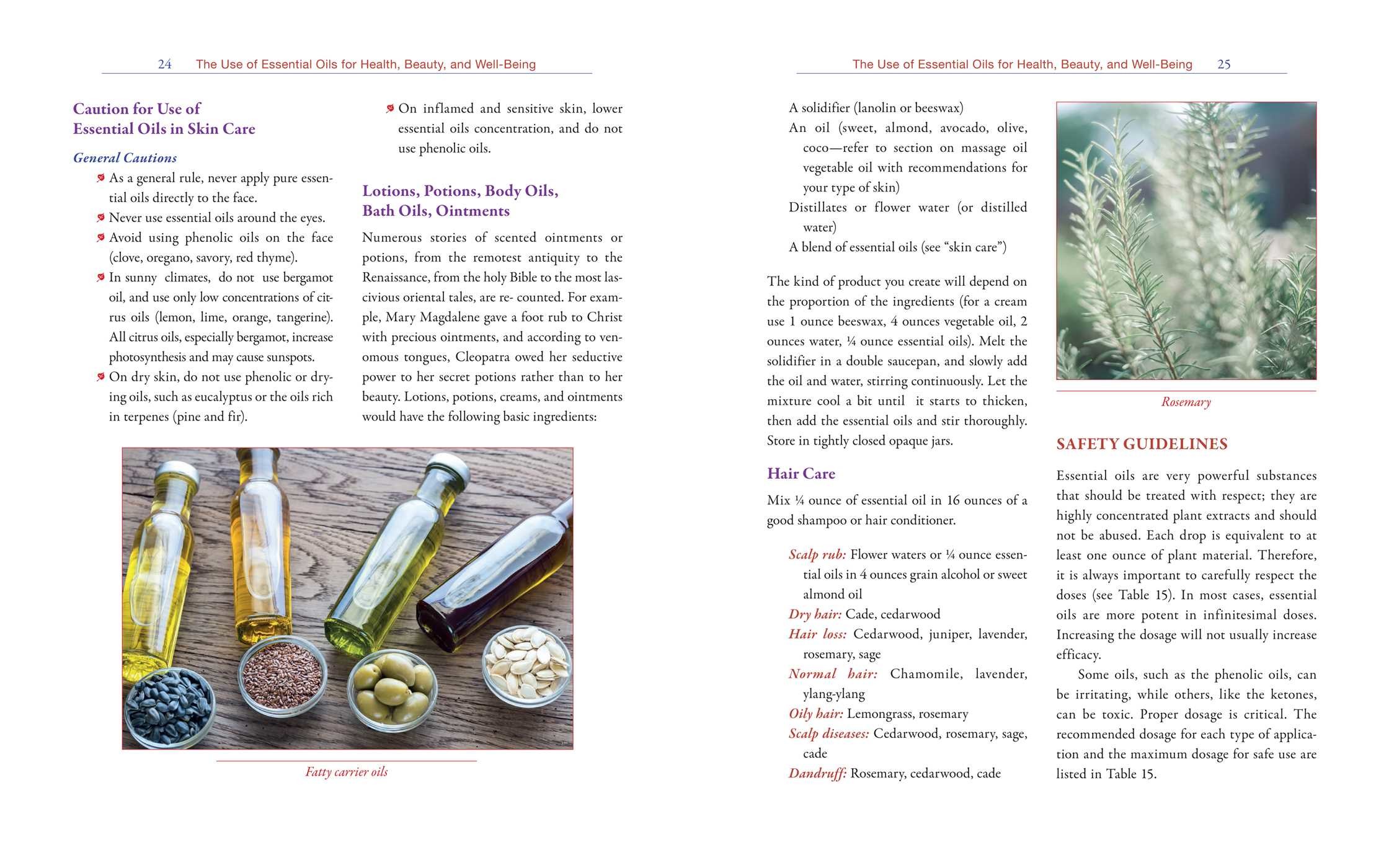Plus get our latest book recommendations, author news, and competitions right to your inbox.
Essential Oils and Aromatherapy Workbook
Published by Healing Arts Press
Distributed by Simon & Schuster
Table of Contents
About The Book
A classic, practical guide to the history, science, and art of aromatherapy, updated throughout with recent research and developments
• Details more than 70 essential oils classified by botanical family, with discussions of their specific actions and energetic and spiritual properties
• Provides specific formulas for common disorders such as digestive and circulatory ailments, headaches, insomnia, and menstrual and sexual problems
• Explains techniques for using plant essences for beautifying, cleansing, and healing and addresses the controversy surrounding some methods of application
Updated throughout with recent research and the latest developments in the use of essential oils, this 30th-anniversary edition of Marcel Lavabre’s classic Aromatherapy Workbook provides the most comprehensive practical guide to the history, folklore, science, and art of aromatherapy available today.
Examining the origins and applications of aromatics, from the mythical Queen of Sheba to René-Maurice Gatefossé, the author traces the medical, alchemical, and spiritual development of this healing art from classical civilizations up to the present. He explains the mysteries of the olfactory system and how this most ancient sensory system affects our moods, our emotions, and our sexuality. Illustrating the biochemistry of essential oils and how they work on the physical, energetic, emotional, mental, and spiritual levels, he explores more than 70 essential oils classified by botanical family, with detailed discussions of their specific actions. He shows how to use appropriate plant essences for beautifying, cleansing, and healing the body, as well as in massage, aromatic baths, ritual, and spiritual practice. He also addresses the controversy surrounding different methods of administration and explores in depth the risks, benefits, and safety guidelines for each technique.
Addressing the fundamental issues of purity and quality, the author discusses the various methods of extraction in detail and includes a special section devoted to the art of blending. He offers specific formulas for common disorders such as digestive and circulatory ailments, headaches, insomnia, and menstrual and sexual problems. Lavabre also includes extensive reference tables to provide the reader with concise information on each essential oil and its therapeutic uses.
This revised edition offers a perfect step-by-step guide for beginners as well as an ongoing reference for practicing aromatherapists.
• Details more than 70 essential oils classified by botanical family, with discussions of their specific actions and energetic and spiritual properties
• Provides specific formulas for common disorders such as digestive and circulatory ailments, headaches, insomnia, and menstrual and sexual problems
• Explains techniques for using plant essences for beautifying, cleansing, and healing and addresses the controversy surrounding some methods of application
Updated throughout with recent research and the latest developments in the use of essential oils, this 30th-anniversary edition of Marcel Lavabre’s classic Aromatherapy Workbook provides the most comprehensive practical guide to the history, folklore, science, and art of aromatherapy available today.
Examining the origins and applications of aromatics, from the mythical Queen of Sheba to René-Maurice Gatefossé, the author traces the medical, alchemical, and spiritual development of this healing art from classical civilizations up to the present. He explains the mysteries of the olfactory system and how this most ancient sensory system affects our moods, our emotions, and our sexuality. Illustrating the biochemistry of essential oils and how they work on the physical, energetic, emotional, mental, and spiritual levels, he explores more than 70 essential oils classified by botanical family, with detailed discussions of their specific actions. He shows how to use appropriate plant essences for beautifying, cleansing, and healing the body, as well as in massage, aromatic baths, ritual, and spiritual practice. He also addresses the controversy surrounding different methods of administration and explores in depth the risks, benefits, and safety guidelines for each technique.
Addressing the fundamental issues of purity and quality, the author discusses the various methods of extraction in detail and includes a special section devoted to the art of blending. He offers specific formulas for common disorders such as digestive and circulatory ailments, headaches, insomnia, and menstrual and sexual problems. Lavabre also includes extensive reference tables to provide the reader with concise information on each essential oil and its therapeutic uses.
This revised edition offers a perfect step-by-step guide for beginners as well as an ongoing reference for practicing aromatherapists.
Excerpt
Chapter Seven. The Use of Essential Oils for Health, Beauty, and Well-Being
Essential oils are pleasant and easy to use. They can be used in many different ways; however, particular methods are more suited to particular applications. For instance, the diffuser is the best way to treat lung conditions, while massage is the best application for muscle pain or rheumatism. The various methods of application of essential oils can be used in conjunction. Massage, bath, and diffuser, for instance, work wonders when used in combination.
The major methods of using essential oils are:
♦ Internally (by ingestion): Essential oils should be taken only internally under direct supervision of a physician.
♦ Through inhalation.
♦ Through the skin (massage, bath, friction, application).
♦ Skin care and cosmetic use (facial, compresses, masks, lotions, creams).
♦ Hair care.
Whether taken internally or externally, essential oils diffuse through the skin and membranes and penetrate deeply into the tissues and the circulatory system. Therefore, external application is a very efficient way to treat specific organs. As a rule, ingestion is indicated only for infectious diseases and to act on the digestive system (throat, stomach, liver, etc.). A massage of the corresponding zone is very helpful in such cases. In any case, essential oils should be taken internally only under medical supervision.
Internal Use
Some adepts of aromatherapy tend to glamorize internal use. They wrongly feel that they have been initiated or have graduated to some higher level of aromatherapy when they start using essential oils internally. That attitude is reinforced by unscrupulous marketers who will market their oils as pharmaceutical grade fit for internal use, intended for the rarefied few who have been initiated to the internal art. These marketers usually charge a very stiff premium for their products.
In fact, internal use of essential oils is not safe and is not even very efficient unless they are taken in capsules or time-release form. When taken through the mouth in drops, the essential oils are mostly absorbed by the tissues in the mouth. Whatever reaches the stomach can provoke heartburn and is very hard on the liver. In fact, regular internal use of essential oils can severely damage the liver. Most of the essential oil will be destroyed in the digestive track and will never make it to the bloodstream. In the end, internal use is usually a harmful and inefficient method of application. The few reported accidents and the handful of fatalities from use of essential oils involved internal use.
It is true that in some cases internal use can be very efficient: two drops of peppermint oil on the tongue will quickly clear upset stomach, nausea, or motion sickness; two to three drops of rosemary on a piece of brown sugar will get rid of hangover after a wild party. Roman chamomile clears sluggish digestion or minor food poisoning. Fennel will promote lactation in nursing mothers. Likewise, cinnamon or savory in capsules are great for intestinal infections. But in most cases, internal use of essential oils strictly concerns medical practice and is generally not advised without medical supervision.
Application of Essential Oils through the Olfactory and Respiratory Systems
The use of aromatic fumigations is probably as old as humanity. Priests, sorcerers, and healers of all traditions used them extensively in their ceremonies and various rituals. Ancient Egyptians burned perfumes in the streets and inside the temples. More than two thousand years ago, Hippocrates, the father of western medicine, successfully struggled against the epidemic of plague in Athens, using aromatic fumigations throughout the city. In the Middle Ages, people burned pine or other fragrant woods in the streets in time of epidemic to cast out devils. Perfumers were known to resist disease.
The application of essential oils through the olfactory and respiratory systems is the easiest, most pleasant, and, in most cases, most effective way to apply them. This method requires minimal patient action: all the patient has to do is turn on a proper diffusing device, which disperses essential oils into the air, and breathe! This application method is the best and easiest way to introduce a newcomer to the world of aromatherapy.
Some Oils to Use in Diffusion
The sense of smell is very subjective; you might particularly like some fragrances and dislike some others, depending on so many factors that it is impossible to tell which one will be your favorite. In addition, your appreciation will depend on your mood, the time of the day, the season, etc.
Calmer (evening): Lavender, marjoram, chamomile, tangerine
Stimulant (morning): Sage, rosemary, pine, mints
Aphrodisiac: Ylang-ylang, jasmine, champaca flowers, sandalwood, patchouli, ginger, peppermint, pepper, savory
Lungs: Eucalyptus, lavender, pine, cajeput, copaiba, hyssop
Nervousness: Mugwort, petitgrain, marjoram, neroli
Hypertension: Ylang-ylang, lavender, lemon, marjoram
Hypotension: Hyssop, sage, thyme, rosemary
Antidepressants: Frankincense, myrrh, cedarwood
Purifier: Lavandin, lemongrass, lemon, pine, chamomile, geranium, oregano
Revivifier: Pine, fir, black spruce
Brain strengthener and memory fortifier: Basil, juniper, rosemary
Insomnia: Neroli, spikenard, marjoram, chamomile
See Appendices I and II for more specific indications.
Caution
Use the diffuser with extreme caution around people subject to allergies, emphysema, or asthma, and around newborn babies. In such cases, use the diffuser for only a few minutes at a time. If any adverse reaction occurs, discontinue immediately. Do not use oils rich in ketones in the diffuser (thuja, pennyroyal, mugwort, hyssop, sage officinalis, lavender stoechas).
Essential oils are pleasant and easy to use. They can be used in many different ways; however, particular methods are more suited to particular applications. For instance, the diffuser is the best way to treat lung conditions, while massage is the best application for muscle pain or rheumatism. The various methods of application of essential oils can be used in conjunction. Massage, bath, and diffuser, for instance, work wonders when used in combination.
The major methods of using essential oils are:
♦ Internally (by ingestion): Essential oils should be taken only internally under direct supervision of a physician.
♦ Through inhalation.
♦ Through the skin (massage, bath, friction, application).
♦ Skin care and cosmetic use (facial, compresses, masks, lotions, creams).
♦ Hair care.
Whether taken internally or externally, essential oils diffuse through the skin and membranes and penetrate deeply into the tissues and the circulatory system. Therefore, external application is a very efficient way to treat specific organs. As a rule, ingestion is indicated only for infectious diseases and to act on the digestive system (throat, stomach, liver, etc.). A massage of the corresponding zone is very helpful in such cases. In any case, essential oils should be taken internally only under medical supervision.
Internal Use
Some adepts of aromatherapy tend to glamorize internal use. They wrongly feel that they have been initiated or have graduated to some higher level of aromatherapy when they start using essential oils internally. That attitude is reinforced by unscrupulous marketers who will market their oils as pharmaceutical grade fit for internal use, intended for the rarefied few who have been initiated to the internal art. These marketers usually charge a very stiff premium for their products.
In fact, internal use of essential oils is not safe and is not even very efficient unless they are taken in capsules or time-release form. When taken through the mouth in drops, the essential oils are mostly absorbed by the tissues in the mouth. Whatever reaches the stomach can provoke heartburn and is very hard on the liver. In fact, regular internal use of essential oils can severely damage the liver. Most of the essential oil will be destroyed in the digestive track and will never make it to the bloodstream. In the end, internal use is usually a harmful and inefficient method of application. The few reported accidents and the handful of fatalities from use of essential oils involved internal use.
It is true that in some cases internal use can be very efficient: two drops of peppermint oil on the tongue will quickly clear upset stomach, nausea, or motion sickness; two to three drops of rosemary on a piece of brown sugar will get rid of hangover after a wild party. Roman chamomile clears sluggish digestion or minor food poisoning. Fennel will promote lactation in nursing mothers. Likewise, cinnamon or savory in capsules are great for intestinal infections. But in most cases, internal use of essential oils strictly concerns medical practice and is generally not advised without medical supervision.
Application of Essential Oils through the Olfactory and Respiratory Systems
The use of aromatic fumigations is probably as old as humanity. Priests, sorcerers, and healers of all traditions used them extensively in their ceremonies and various rituals. Ancient Egyptians burned perfumes in the streets and inside the temples. More than two thousand years ago, Hippocrates, the father of western medicine, successfully struggled against the epidemic of plague in Athens, using aromatic fumigations throughout the city. In the Middle Ages, people burned pine or other fragrant woods in the streets in time of epidemic to cast out devils. Perfumers were known to resist disease.
The application of essential oils through the olfactory and respiratory systems is the easiest, most pleasant, and, in most cases, most effective way to apply them. This method requires minimal patient action: all the patient has to do is turn on a proper diffusing device, which disperses essential oils into the air, and breathe! This application method is the best and easiest way to introduce a newcomer to the world of aromatherapy.
Some Oils to Use in Diffusion
The sense of smell is very subjective; you might particularly like some fragrances and dislike some others, depending on so many factors that it is impossible to tell which one will be your favorite. In addition, your appreciation will depend on your mood, the time of the day, the season, etc.
Calmer (evening): Lavender, marjoram, chamomile, tangerine
Stimulant (morning): Sage, rosemary, pine, mints
Aphrodisiac: Ylang-ylang, jasmine, champaca flowers, sandalwood, patchouli, ginger, peppermint, pepper, savory
Lungs: Eucalyptus, lavender, pine, cajeput, copaiba, hyssop
Nervousness: Mugwort, petitgrain, marjoram, neroli
Hypertension: Ylang-ylang, lavender, lemon, marjoram
Hypotension: Hyssop, sage, thyme, rosemary
Antidepressants: Frankincense, myrrh, cedarwood
Purifier: Lavandin, lemongrass, lemon, pine, chamomile, geranium, oregano
Revivifier: Pine, fir, black spruce
Brain strengthener and memory fortifier: Basil, juniper, rosemary
Insomnia: Neroli, spikenard, marjoram, chamomile
See Appendices I and II for more specific indications.
Caution
Use the diffuser with extreme caution around people subject to allergies, emphysema, or asthma, and around newborn babies. In such cases, use the diffuser for only a few minutes at a time. If any adverse reaction occurs, discontinue immediately. Do not use oils rich in ketones in the diffuser (thuja, pennyroyal, mugwort, hyssop, sage officinalis, lavender stoechas).
Product Details
- Publisher: Healing Arts Press (November 1, 2020)
- Length: 256 pages
- ISBN13: 9781644110706
Browse Related Books
Raves and Reviews
“In short, this colorful, straight-forward, and easy-to-read book supplies its reader with EVERYTHING you would ever need to know about the craft and the science of aromatherapy. It’s a must-read for any eager beginner and wonderful reference companion for a seasoned practitioner.”
– Carter Tracy, Indie Mystic
Resources and Downloads
High Resolution Images
- Book Cover Image (jpg): Essential Oils and Aromatherapy Workbook 3rd Edition, 30th Anniversary Edition of Aromatherapy Workbook Trade Paperback 9781644110706


